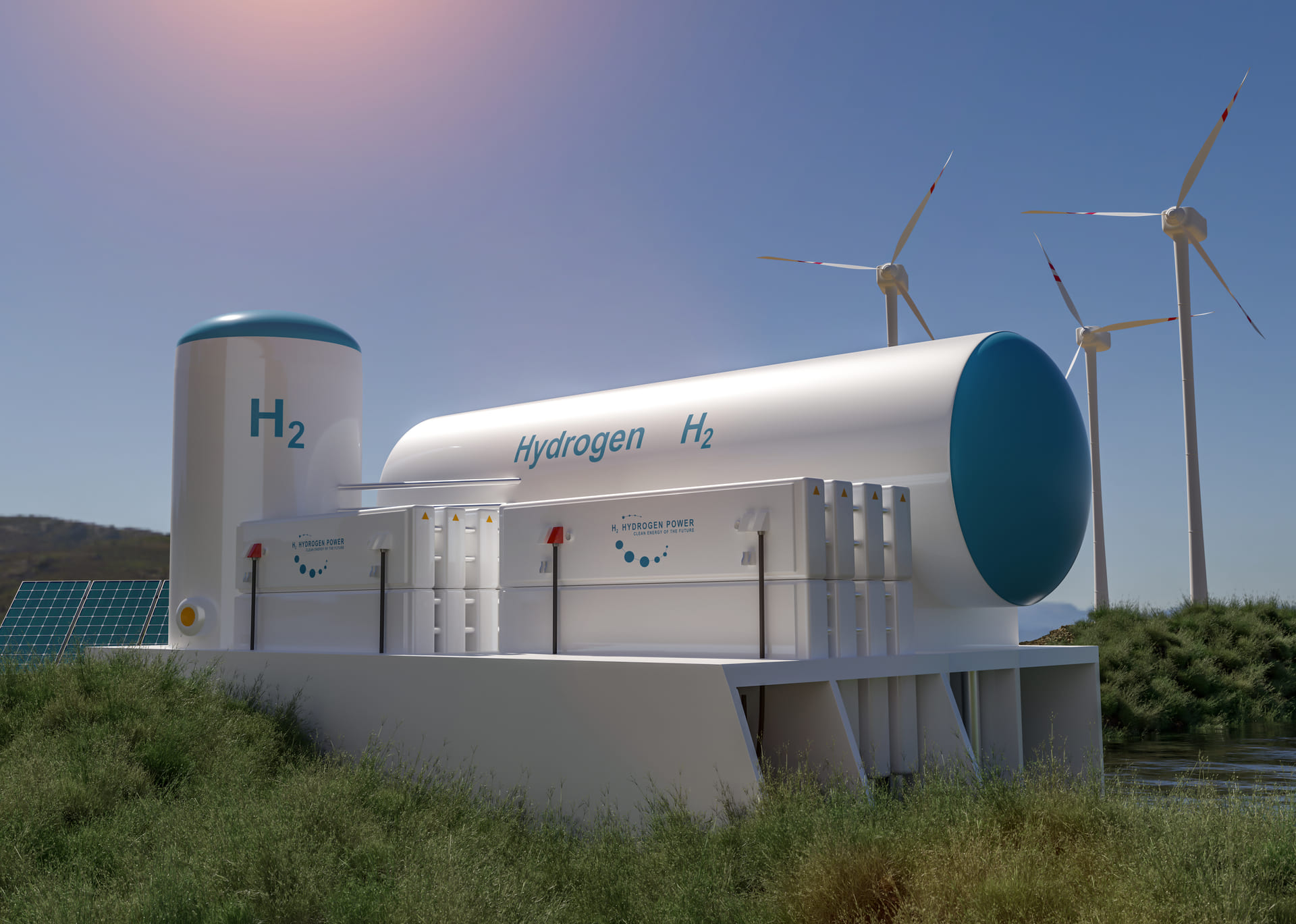What if the economy could run on green hydrogen
Without green hydrogen it will not be possible to achieve a sustainable global economy. Because it can be used for so many applications, it will become a scarce commodity in the coming decades, no matter how much we produce.

The role and challenges of hydrogen in a sustainable future
Hydrogen is the first element of the periodic table and the most abundant element on Earth. In its molecular form (H2), it has numerous applications: generating electricity, powering cars, ships and aircraft, heating buildings, producing of steel, manufacturing fertilizers, ammonia and other chemicals. And this all without emitting any CO2, but just water. Amazing, isn’t it?
Unfortunately hydrogen in its pure molecular form does not exist naturally exist on Earth. That means it needs to be extracted from raw natural gas through a process called steam reforming, or from water through electrolysis. Almost all hydrogen is currently produced using the first method, but this so-called grey hydrogen is anything but climate-friendly.
Indispensable for policy makers: the hydrogen ladder
The second method, electrolysis, is potentially better. It has the same characteristics as hydrogen from steam reforming but the electricity used to split water into hydrogen and oxygen has to be as low-carbon as possible. Meeting this condition is harder than it seems, but until it is met, we cannot truly talk of ‘green’ hydrogen.
To green all hydrogen production in the world today, the equivalent of 25% of the world’s total electricity generation would be necessary. And all of this must be carbon-neutral. This green energy does not exist, nor will it exist in the near future. Any new ‘green’ capacity will be used as much as possible to electrify the economy.
Choices have to be made between applications that simply cannot be decarbonised without green hydrogen, and applications for which sustainable alternatives do exist. Steel production is an example from the first category, which currently uses coal as its main energy and material source. Hydrogen could do the same job, without CO2 emissions. Examples from the second category are the (light) transport sector and heating buildings. Batteries and heat pumps, both powered by electricity, are much more efficient from an energy point of view for powering light vehicles and heating buildings, respectively.
Clearly there are some applications where green hydrogen is preferred, and others where it should be avoided. These applications are summarised by the “hydrogen ladder.” The diagram should be on the desk of every energy policymaker. If, in the future, we use hydrogen for the “hard-to-abate” industrial sectors and for long-distance flying and maritime transport, we will need the equivalent of about 100% of the world’s current total energy generation.

Imports from hydrogen countries
Ambitious plans are being rolled out to import green hydrogen from areas where renewable sources (such as wind and sun) are abundant, such as Australia, Morocco, Chile, Namibia and the Gulf States. Electrolysers would produce green hydrogen in these countries, which would then be distributed globally via large tankers.
However, the electricity mix currently used to power the electrolysers in these ‘hydrogen countries’ has to be sufficiently green but that is not the case. It can only be used to produce low-carbon or green hydrogen when the emissions are low enough. For this, energy experts use the limit value of 140 grams of CO2 per kilowatt-hour of electricity. To produce green hydrogen, the value for the power mix must remain well below this level. This is quite a challenge, because in Europe it currently stands at 216g/kWh. And even in the countries mentioned above, it is still well above 140g/kWh. Therefore, the best way to green the global economy is first to reduce greenhouse gas emissions from the power mix.
Need for innovation in hydrogen technology
The efficiency of the electrolysis process can be increased. Innovation in hydrogen technology is desirable and necessary. The Belgian company Hyve is developing a technology that reduces the electricity needed to produce 1 kg of hydrogen by 10%. In Oman, the Flemish company DEME is involved in the development of a green hydrogen plant with a capacity of up to 500 megawatts, which should be operational by 2026. The Belgian company CMB, together with other Belgian companies, is building a solar park in Namibia that will produce one million tonnes of green hydrogen from 2026 onwards.
It will not be possible to achieve a sustainable global economy without green hydrogen. But the versatility of green hydrogen has a downside. Intense competition to get it will make it a scarce commodity in the coming decades, no matter how much we produce. In other words, we need to handle it very wisely.
